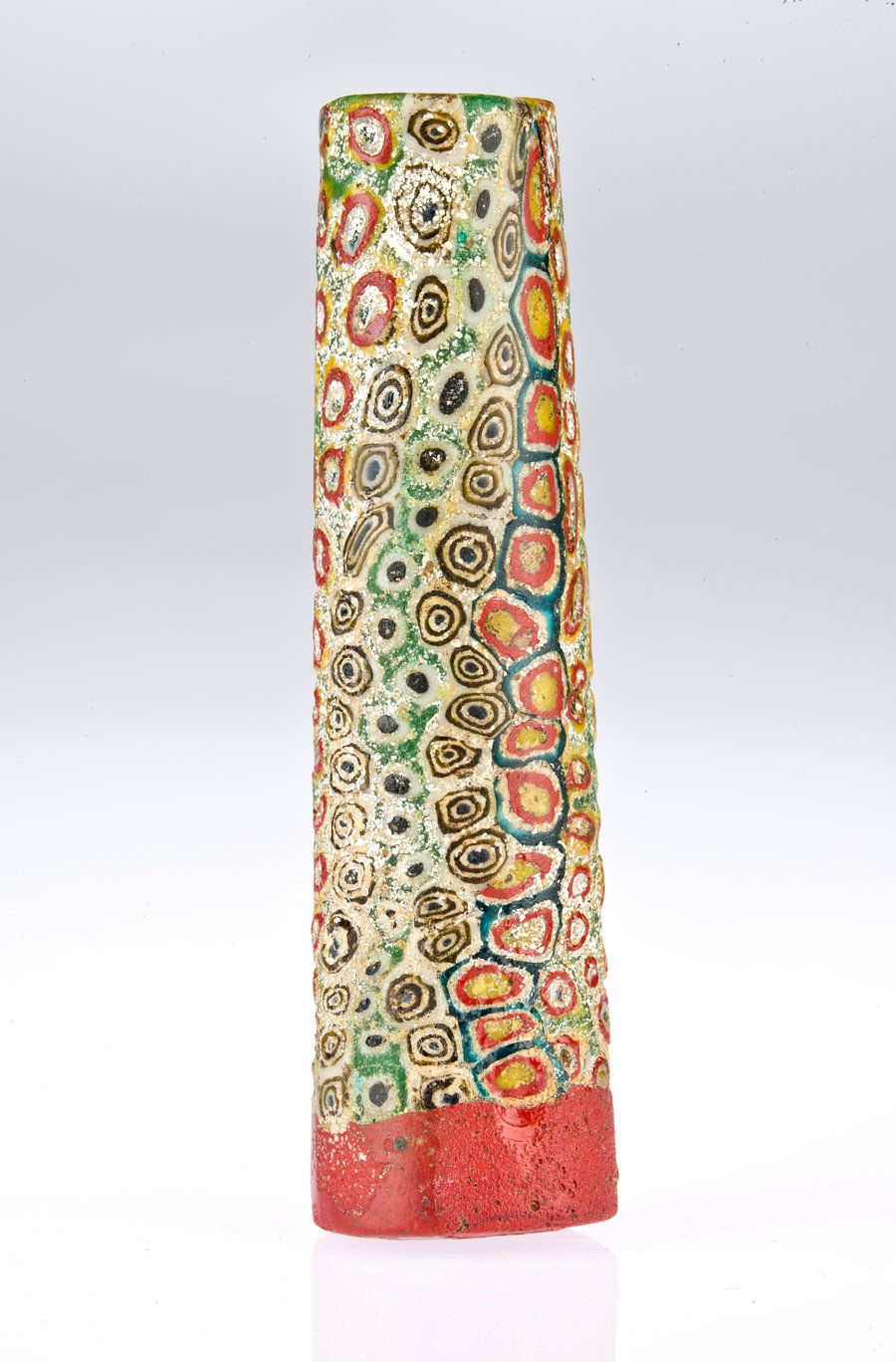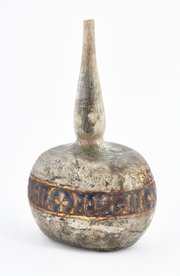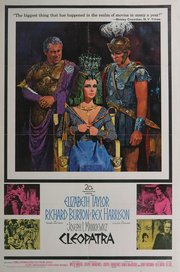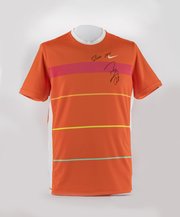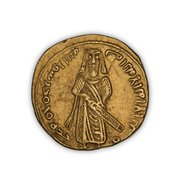
Mosaic Glass Cosmetic Container
Museum of Islamic Art
- Title:
- Mosaic Glass Cosmetic Container
- Production place:
- Iraq
- Date:
- 800 - 999
- Period:
- Abbasid
- Title:
- Mosaic Glass Cosmetic Container
- Production place:
- Iraq
- Date:
- 800 - 999
- Period:
- Abbasid
- Material:
- Glass
- Technique:
- Mosaic, Rod‑forming, Fusing, Marvering, Grinding, Polishing
- Dimensions:
- 7.8
- Diameter:
- 2.2
This small glass cosmetic container is made from mosaic or millefiori (thousand flowers) glass, a technique that involves fusing together cut rods of colourful glass, to form this tall and slender cylindrical shaped bottle. The base is made of solid red-brick glass and tapers slightly towards a cut top. Iridescent spots also appear along the glass surface. This time-consuming technique has been used intermittently for around 3,500 years, from the Bronze Age to the present. The earliest examples consist either of slices of monochrome canes or chips of various colours arranged in patterns around a core. Unlike the great majority of surviving Hellenistic and Roman examples, most Islamic specimens have a ‘bull’s-eye pattern’: a circular spot at the centre, a concentric ring of another colour, and one or more outer rings, either monochrome or having dots in a matrix of another colour. The discovery of fragments of mosaic glass vessels and tiles in the ruins of the Jawsaq al-Khaqani, the Abbasid palace built by Caliph al-Mu’tasim in 221-228 AH/836-42 CE at Samarra (Iraq), confirms the production of this glass in the 3rd century AH/9th century CE. Why Islamic craftsmen revitalised this ancient tradition remains unknown; nonetheless, it testifies to the ingenuity and wealth of the Abbasids. Small objects, such as this container, were most likely used by wealthy patrons to store precious substances such as perfumes or cosmetics.
